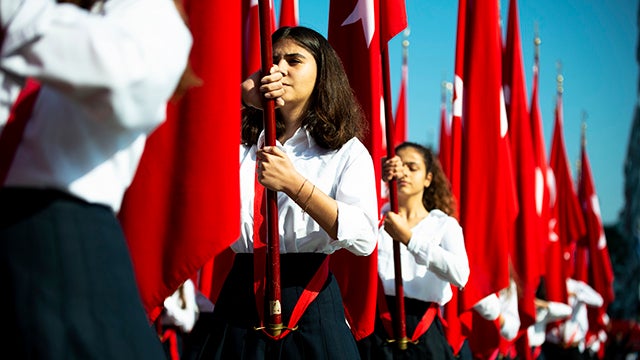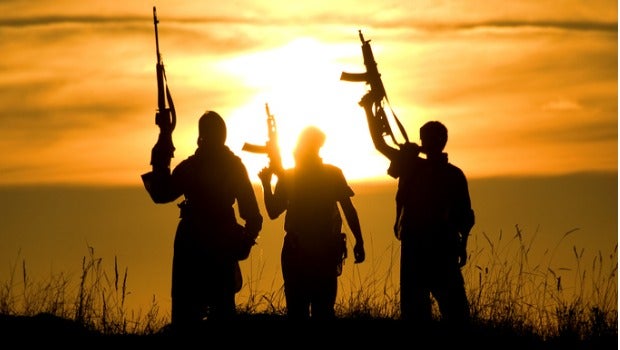Susan Rice, the National Security Advisor to President Barack Obama, and a former member of the Aspen Strategy Group (ASG), delivered an address to the 19th convening of the ASG’s US-India Strategic Dialogue to share with the group her perspective on Indo-US ties. Read below for the full remarks, and click here to see press coverage of the convening.
Thank you so much for that introduction, Walter. Mr. Ambassador, thank you for welcoming us to your home this evening. It’s a pleasure to be back with the Aspen Institute, which for me is a source of many fond memories and, hopefully, some future endeavors. It is always a place where thinkers and policy makers can usefully exchange ideas and inform the decisions that are so critical to our shared future. I want to thank Joe Nye and Nick Burns for inviting me to join you, as well as Ambassador Chandra and Tarun Das, and all the distinguished members of the Indian and American delegations for participating — I see a lot of colleagues and friends in the room tonight.
The relationship between India and the United States can and should be, as President Obama has said many times, “one of the defining partnerships of the 21st century.” And, as I’ve experienced firsthand, it can also be one of our most productive partnerships. I worked closely with India’s former Ambassador to the United Nations, Hardeep Puri, almost every day that we served together on the Security Council. As national security advisor, I’ve built a productive relationship with my Indian counterpart, Shankar Menon. These relationships come naturally, in part, because the global agenda that India and the United States share is grounded in our common democratic values and our historic commitment to promoting opportunity.
For almost two decades, in both India and the United States, presidents and prime ministers and political parties have come together and worked to overcome old schisms. Piece by piece, we’re establishing a lasting partnership that’s equipped to tackle today’s global challenges. And, the United States is confident that, whatever the outcome of India’s upcoming national elections, the cooperation and strategic partnership between our nations will continue to grow.
That’s not to say that our relationship doesn’t require work, or that there aren’t real challenges to overcome. Every meaningful partnership between powerful nations encounters setbacks. And, obviously, recent events have drawn more attention to our disagreements than to our cooperative efforts. But, those difficulties should be minor compared to the breadth of our relationship and the magnitude of what we can accomplish together. We must also deal with our differences in a constructive manner, commensurate with a relationship of this importance. We cannot allow such challenges to derail the future we are working diligently to build — a future of greater prosperity, greater security, and consistent adherence to our shared values.
Together, we’ve advanced the US-India relationship in ways that deliver undeniable benefits for both our peoples. Since 2009, our bilateral trade has grown to nearly $100 billion — that’s an increase of more than 50 percent. We recently launched the Indian Infrastructure Debt Fund, an idea born out of our collaboration with CEOs from Indian and American companies that will harness private sector funding to help meet India’s growing infrastructure needs. Last year, as part of the effort to implement our landmark Civil Nuclear Cooperation Agreement, American companies began negotiations with India’s nuclear power utility to build new reactors capable of powering Delhi and Mumbai through the hottest summer. And, we’ve mobilized support for sustainable and renewable energy projects, including a new off-grid power initiative that will help millions of Indian families gain access to affordable, reliable, clean energy for the first time.
We’re deepening our cooperation in meaningful ways across the board, and as India continues to grow and to take on greater responsibilities on the world stage, we must work even harder to make sure this partnership lives up to its potential. Tonight, I’d like to talk briefly about a few areas where we must keep pushing ourselves — and our partnership — to do more.
First, we need to expand opportunities for trade and investment. This is easy to agree on in theory. In practice, we have to be willing to make choices that will open up new opportunities for commerce to thrive. The United States supports the goal of creating jobs and bolstering production — here at home as well as in India — but, we need policies that achieve these goals without distorting trade or discouraging innovation.
Of particular concern are local content policies that are meant to stimulate domestic manufacturing but actually end up discouraging investment, thus undermining the overall goal of increasing growth. Similarly, knowledge-driven economies like India’s and the United States’ rely on our ability to share ideas. If companies are not confident that their intellectual property rights will be protected, it works to dis-incentivize innovation and cooperation.
These tough issues won’t be resolved overnight. But, President Obama and Prime Minister Singh are committed to maximizing our economic relationship. Concluding a bilateral investment treaty would be a strong step forward, helping to attract more capital to India and benefiting Indians investing in industries across the United States. And, since our two nations make up almost a quarter of the world’s population, it can only benefit the global economy.
That leads me to the second area where we need to work harder. As the world’s oldest and the largest democracies, our nations have a responsibility to stand united to defend the values that our peoples share. As President Obama said in his address to the Indian Parliament, “Speaking up for those who cannot do so for themselves is not interfering in the affairs of other countries… It is giving meaning to the human rights we say are universal.”
Let’s build on the important steps we’ve already taken, such as: working together in the UN Human Rights Council to advance reconciliation in Sri Lanka; supporting elections in third countries; and helping found the UN Democracy Fund. Still, there’s much more we can do, starting by ensuring that the rights of women, members of ethnic and religious minority groups, and those in the LGBT community are protected at home and abroad. Both our nations have struggled with these issues in our histories, and we must continue working to make our democracies safe for all our citizens and to lead the world by our example.
Within 15 years, India will be the world’s most populous nation and its third largest economy. That carries serious weight. It also comes with greater expectations for responsible, reliable international leadership and burden-sharing. To that end, India and the United States have enhanced our consultations on global and regional issues, including on our common objective of putting Afghanistan on a stable and self-sustaining path. We must also keep working together on major global challenges, such as addressing the drivers of climate change that have critical implications for every nation.
When it comes to promoting regional stability, the United States strongly supports efforts by India and Pakistan to expand their trade and commercial ties. With sustained leadership from both governments, this will not only reap real economic rewards, it will help broaden the base of support for normalization on both sides of the border. India is also essential to America’s broader engagement with Asia, where many of our national interests converge. We look forward to enhancing the ways that India’s Look East policy and America’s rebalance to Asia can be mutually reinforcing.
Finally, we need to strengthen our security cooperation to keep our nations safe and to address global challenges more effectively. Here we’ve made good progress. Later this year, for the first time, India will join the United States and countries throughout Asia to participate in the Rim of the Pacific exercise in Hawaii. Indian forces are using US-sourced aircraft to support typhoon relief in the Philippines and UN peacekeeping operations in the Congo. And, we’ve taken steps to reduce the bureaucratic hurdles that have held back cooperation on the development of military hardware. Our challenge is to find ways to further elevate and expand our military-to-military relationship.
For each proposal we make, for each common challenge we face, we must ask ourselves: How can the United States and India partner to lead the international community? That’s a question we’re asking in Washington, and we are committed to working closely with our Indian counterparts to determine the answers.
Allow me to end on a personal note. I had the privilege of visiting India a couple years ago while I was Ambassador to the UN. I will long remember the warmth of the welcome I received in my official capacity. But, the main reason I will never forget that trip is because I was able to bring my children along and to share with them a greater understanding of India and its people. To explore the extraordinary cultural treasures of Agra and Udaipur, to hike in one of the world’s most renowned bird sanctuaries in Bharatpur — all was amazing — even more so to witness how the future is taking shape so rapidly alongside India’s ancient history.
I am grateful that my kids got to see what makes India unique — and to experience the connections and values we share. That understanding will help them contribute to our shared endeavors, as our two nations knit themselves more closely together in the future. The past 10 years have been transformational for the United States and India. The next decade holds even greater promise for us to cultivate a mature relationship on a global scale. It’s up to us to keep building on the foundation we’ve laid, so that our children and grandchildren can reap the benefits of this great partnership.
Thank you for all that you are doing to make that vision a reality.

